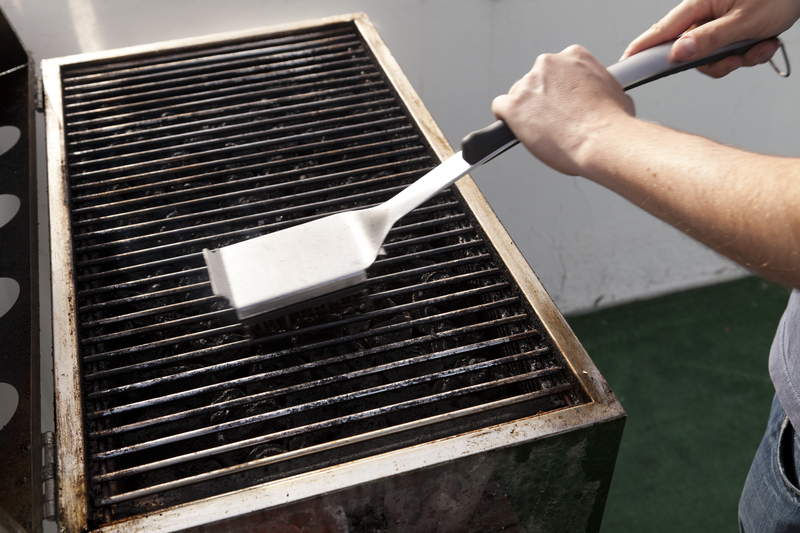Effortless Ways to Ensure Your Bathroom is Mold-Free
Posted on 03/10/2025
Effortless Ways to Ensure Your Bathroom is Mold-Free
Keeping your bathroom mold-free can seem like a daunting task, but with the right strategies, it doesn't have to be a never-ending battle. This comprehensive guide covers effortless tips and techniques for eliminating mold and keeping your bathroom healthy for the long term.
Why It's Crucial to Keep Your Bathroom Mold-Free
Mold in bathrooms is not just an aesthetic issue; it poses real health risks and structural hazards. Bathrooms provide the perfect breeding ground for mold spores because of their damp, humid environments. Let's explore why maintaining a mold-free bathroom matters:
- Health Concerns: Mold exposure can cause allergies, asthma attacks, and respiratory problems.
- Damage to Property: Mold eats away at grout, tiles, wood, and drywall, leading to costly repairs.
- Unpleasant Odors: Persistent mold produces a musty smell that is hard to eliminate.

What Causes Bathroom Mold?
Understanding what causes mold in bathrooms is the first step to prevention. The main factors include:
- Moisture: Constant steam and water splashes lead to excessive humidity.
- Poor Ventilation: Inadequate airflow traps moisture, encouraging mold growth.
- Lack of Sunlight: Mold thrives in dark corners and spaces.
- Ineffective Cleaning: Skipping or rushing cleaning routines allows grime and mold spores to build up.
Luckily, keeping your bathroom mold-free doesn't have to be difficult. By implementing the effortless approaches below, you can easily maintain a healthy, mold-resistant space.
Effortless Daily Habits for a Mold-Free Bathroom
Small, consistent habits are your first line of defense. Here are simple daily practices that make all the difference:
Wipe Down Surfaces After Use
- Use a squeegee or microfiber cloth to remove water from shower walls, glass, and counters after each use. This step alone can drastically cut down on unnecessary moisture.
- Pay attention to corners and seams where water tends to collect.
Keep the Room Ventilated
- Open windows during and after showers, if possible, to let fresh air in and damp air out.
- Leave the door open for a while after use to help air circulation.
- If your bathroom lacks a window, always run the exhaust fan for at least 20-30 minutes after showering.
Hang Up Towels and Mats
- Wet textiles are a magnet for mold. Hang towels and bath mats spread out instead of bunched together.
- Consider switching to fast-drying materials for towels and mats.
Eliminate Standing Water Immediately
- Check for puddles around the tub, toilet, or sink. Wipe up water right away to prevent it from soaking into grout or subflooring.
Weekly and Monthly Maintenance Tips
Beyond daily habits, routine cleaning and maintenance are vital for preventing mold. Scheduling these activities ensures your bathroom stays dry and clean with minimal effort.
Thoroughly Clean Tiles and Grout
- Scrub tiles, grout, and caulk lines every week with a mildew-fighting cleaner or a natural mixture of vinegar and baking soda.
- Use an old toothbrush for corners and hard-to-reach spots - these areas are mold's favorite hiding place.
Wash Shower Curtains and Liners
- Launder fabric shower curtains on hot regularly, and wipe down plastic ones with vinegar or a commercial cleaner.
- Replace liners every few months or when they show any signs of mildew.
Clean Exhaust Fans and Vents
- Dust and wipe down exhaust fan covers monthly. A clogged exhaust fan can't clear humidity effectively.
- Ensure all vents are unobstructed.
Empty and Clean Drains
- Unclog and disinfect sink, tub, and shower drains monthly to prevent the buildup of organic matter that can foster mold.
- Drain cleaners or a mixture of baking soda and vinegar followed by boiling water is an effective natural option.
Effortless Upgrades for Mold Prevention
Some minor upgrades can greatly reduce humidity and stop mold from ever taking hold. Consider these investments:
Install a High-Quality Exhaust Fan
- Upgrade to a powerful, quiet fan that effectively removes moist air.
- Look for models with humidity sensors or timers for hands-off operation.
Switch to Mold-Resistant Materials
- Use mold-resistant paint, grout, and caulk when updating surfaces. These formulas contain antimicrobial agents.
- Opt for glass doors instead of curtains and large tiles with fewer grout lines for easier cleaning.
Enhance Natural Lighting
- Mold hates sunlight. If feasible, install a window or skylight to brighten the room.
- Use bright, daylight-temperature bulbs to simulate sunlight and discourage mold.
Add a Small Dehumidifier
- A compact, energy-efficient dehumidifier can quietly zap moisture, especially in poorly ventilated bathrooms.
- Empty it regularly and keep it running during humid months.
Troubleshooting Persistent Bathroom Mold
If mold keeps returning despite your efforts, you may have a bigger issue that needs attention. Here's how to address recurring bathroom mold problems:
- Check for Hidden Leaks: Inspect under sinks, behind toilets, and inside walls for leaks. Fix them immediately to stop water from seeping into hidden areas.
- Replace Old Grout and Caulk: If these materials are cracked, peeling, or stained, remove and reseal with mold-resistant products.
- Consider Water-Proofing: Apply waterproof sealers to grout and tile to add an extra layer of protection.
Natural Solutions to Remove Bathroom Mold
If you spot mold, act fast to clean it up before it spreads. Many natural ingredients are effective at killing and removing mold without harsh chemicals.
- White Vinegar: Spray undiluted vinegar directly onto moldy surfaces and let sit for 30-60 minutes before scrubbing and rinsing.
- Baking Soda: Mix with water into a paste and use it as a gentle abrasive cleaner.
- Hydrogen Peroxide: Spray a 3% solution onto affected areas and let it bubble for 10 minutes, then wipe clean.
- Tea Tree Oil: Add a teaspoon to a spray bottle filled with water. Spray and leave it - no rinse needed.
Important: Always wear gloves and ventilate the bathroom during cleaning. Wash or throw away any cleaning tools used on mold-filled areas.
FAQs: Keeping Your Bathroom Mold-Free
1. How can I keep my bathroom mold-free naturally?
Daily wiping, leaving doors/vents open, using natural cleaners like vinegar, and maintaining low humidity are the best natural steps for effortless bathroom mold prevention.
2. Should I be worried about mold behind tiles or walls?
If there's a persistent musty smell, peeling paint, or discolored grout, mold may be lurking out of sight. Address leaks and call a professional for inspection if you suspect hidden mold.
3. What humidity level is considered safe for bathrooms?
Keep humidity consistently below 50%. Use a hygrometer (humidity meter) to monitor the room's moisture levels. Ventilation and a dehumidifier help tremendously.
4. How do I prevent mold in bathrooms without windows?
Install a strong exhaust fan, use a dehumidifier, leave the door open when possible, and be diligent about moisture control and cleaning habits.

Effortless Checklist for a Mold-Free Bathroom
- Ventilate after every bath or shower
- Wipe down wet surfaces daily
- Hang towels and mats up to dry
- Clean tiles, grout, and drains weekly
- Run exhaust fans or open windows
- Use mold-resistant products
- Fix leaks right away
- Disinfect problem areas with natural solutions
Conclusion: Make Your Bathroom Effortlessly Mold-Free
Preventing and eliminating mold in bathrooms doesn't have to be hard or time-consuming! By embracing a few simple routines, upgrading materials when possible, and staying vigilant, you'll enjoy a fresh, beautiful, and mold-free bathroom effortlessly. Maintain good airflow, manage moisture, and keep your bathroom clean to stop mold before it starts. With these tips, a healthier, fresher home is just a few steps away.
Remember: keeping your bathroom mold-free is about consistent small actions--adopt these habits and upgrades, and mold won't stand a chance.




